Introduction
Let´s go? Why visit Cosenza, one of the most beautiful cities in Calabria? Stay with us and make the best of boot country! Here at Traveling to Calabria you make the trip of your dreams!!! Here at Your Travel to Calabria you make the trip of your dreams!!! Are you staying in Calabria? Looking for a hotel? Click here and discover best accommodation options in Calabria!
Let’s take a walk!
After some steps in the center of Cosenza, the way will lead us to taste the water of the thirteen-channel Fountain from the Zumpo aqueduct in Sila, light and refreshing, to continue along the Corso Telesio, home of the House of Cultures, the Cathedral of 1100, while in one of the seven hills (Pancrazio) stands the figure of the Suevo Castle, an imposing fortress, also ancient, which was a shelter of Frederick II of Swabia, the ‘Stupor Mundi’, emperor-tycoon who was deeply in love with the city of Cosenza.
1) Visit the Suevo Castle
Arising as a fortress at the top on Mount Pancrazio, it was built by the Saracens on the remains of the ancient fortress bruzia; it was built by Ruggero II, in 1130, but only 54 years after the earthquake of 1184, made it totally unusable. It was a mission to the workers of Frederick II of Swabia (also known as Stupor Mundi) restoring it by adding the octagonal tower, in 1239. In 1443 was completely decorated for the party and to be used as royal residence to accommodate the newlyweds Luigi III d ‘Anjou and Margherita di Savoia. The architecture was very much conditioned both in defining it from then on, castle of Swabia, presents, in fact, a rectangular plan with a central patio and an angular tower rest in octagonal, typical form of the Swabia construction.
2) Visit the Cosenza’s Churchs
The churches that show the course of the history are diverse; of them the most important come as the Cathedral of Cosenza, the Cloister of St. Francis of Assisi, the church of St. Domenico, with its beautiful internal area (1500).
The Cathedral of Cosenza is located in the old town, built around 1140, and was rebuilt after the violent earthquake of 1184. It houses inside, the tomb of Queen Isabel of Aragon. The frontage is in Gothic style; the interior is a Latin cross and three naves, which are divided by large rectangular pillars of Romanesque style in pink stone of Mendicino, placed on top by geometric or natural friezes of Byzantine style. In the nave on the left, there are two chapels in Baroque style, with the floor increased in relation to those of the other naves. In the first chapel remains the Byzantine icon representing the Madonna Del Pilerio, matron of the city, since it saved the inhabitants of Cosenza from the terrible plague of the sixteenth century. In the left arm of the transept is the sepulcher of Isabella of Aragon, perhaps the work of French workers from 1200. In the right nave is another sarcophagus, probable tomb of the rebellious son of Frederick II, Enrico VII, called the Coxo.
The Church of St. Francis of Assisi
The church of St. Francis of Assisi was built next to the convent and represents one of the oldest religious buildings in the town. The convent is located in the upper part of the old town, on the Mount Pancrazio. It was built on the ruins of a Benedictine monastery. Destroyed by the earthquake of 1184, it was rebuilt by Frederick II and, later, delivered to Peter Cathin, companion and disciple of St. Francis, as residence of the Friars Minor. A few years later the Benedictines returned, then the conventual ones, and therefore the smaller observers who built the Chapel of the Immaculate. Next to the church is the cloister, probably the work of the observers, who settled the structure in 1436. In the admirable interior lies the largest altar, in gilded wood. The wooden pulpit of fine workmanship was carved in the first half of 1900.
The Church of San Domenico
It shows on the Piazza Tommaso Campanella a true contour line between the oldest and the most modern part of the city of Cosenza. The religious building that is part of a monastery complex built by orders of Sanseverino, in the mid-fifteenth century, stands out over the square with its imposing baroque copper-clad cupola after World War II. Built on a previous cult building dedicated to St. Matthew and consecrated in 1468, it flanked the Dominican monastery built inside the palace donated by Sanseverino to the Dominicans. The original structure underwent through some changes during the eighteenth century, but the frontage preserves some original elements in Gothic style, among them the rosette and the frame of the gate.
Convent of the Dominicans
To the left of the church is the old convent of the Dominicans, with a remarkable cloister that carries arches, pillars and portals in Catalan-Durazzo style; in the center, a well with coats of arms of the Ruffo family and Ferrari d’Epaminonda. Built in 1449 by the will of the prince of Bisignano, Antonio Sanseverino from 1525, it hosted a General Studio of the two provinces of Calabria, Citra and Ultra, where also was Tommaso Campanella. Suppressed in 1809, it became the seat of the Military District and, now, acquired by the Municipal Administration of Cosenza, it is used as home to cultural events.
3) Visit The National Library
To visit there is also the national library, the Arnone Triglio Palace on Mount Triglio, where the court and the prison; now restored to its former splendor was transformed into the headquarters of the National Gallery, where it is possible to admire the original icon of Madonna del Pilerio, matron of Cosenza and the Estauroteca, a precious reliquary donated by Frederick II to the city on the occasion of the restoration of the Cathedral (1222), as well as the works of several southern painters, among them are Peter Negroni, Mattia Preti and Luca Giordano.
4) Visit The Stauroteca of Cosenza
The Stauroteca of Cosenza is a work in gold, very valuable in fact, and decorated with enamels and precious stones. Considered among the most valuable works of art that Calabria exhibits, the Stauroteca of Cosenza (from the Greek Stauròs, meaning Cross, and Heke, meaning collection); the cross reliquary contain a fragment of the true cross of Christ and is among the most beautiful and precious of the world. This important relic arrived at Cosenza on January 30, 1222, as a gift from the Emperor Frederick II of Swabia to the city on the occasion of the consecration ceremony of the Cathedral after the devastating earthquake in 1184.
Map Cosenza Itinerary
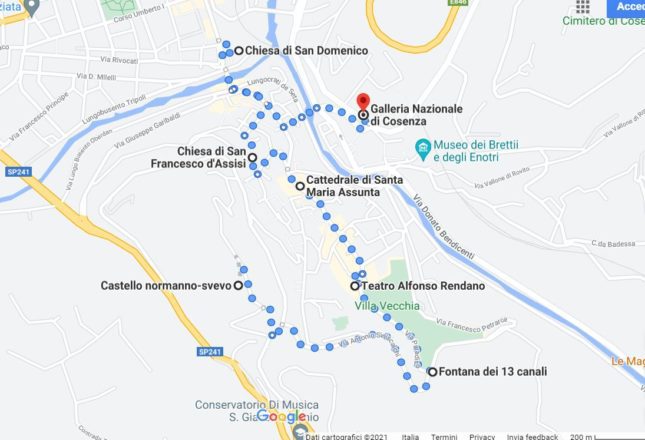
The History about Cosenza
The ancient city of Cosenza is gently overextended out over the seven hills surrounding it, it is reported that when Emperor Frederick II arrived in Cosenza, in 1222, the city and the surrounding countries were endowed with insignia and emblems that represented them. The inhabitants of Cosenza chose as a symbol of their city, the seven hills that surround the place, where for thousands of years the ‘village’ has arisen. Certainly the choice was influenced by the call to the most famous Seven Hills, of Rome, a city with which he always liked to make similarities. The seven hills of Cosenza are arranged, to the left and right, as following: Crati, Pancrazio, Torrevetere, Guarassano, Triglio, Venneri, Gramazio and Mussano, and formed the site of the ancient city, before they began to develop in the northern plains.
Cosenza is a beautiful city of Calabria and is located in a territory inhabited by the ancient ennoble people and frequented by the Romans; its origins go back to the period in which almost bretti decided to found their capital at the foot of the Silano plateau. In 410 AD, it is said that the king of the Visigoths, Alaric, died there from malaria and is still being sought today by researchers around the world. From that time on, there were a series of historical and dramatic events that occurred by the earthquakes that repeatedly destroyed the various dominations that followed: the Lombard, in 589 AD, the Saracens, in 863 AD, again destroyed, in AD 957, back to the Byzantines. In 1059 arrived the Normans leaving their traces in the castle. The return of the Suevi, with the emperor Frederick II who lived there until 1270, rebuilt the castle on the ruins, the Norman, and built in 1150, the great Cathedral of Cosenza. In 1283 the very long Spanish domination began with the Aragon’s and ended with the Bourbons, in 1734.
Watch this amazing video about Cosenza!
(Source: Invidiosrl)
A little more about Cosenza
In particular, the Piedmonts, not behaving differently from other settlers, displaced industrial and artisanal places to work steel, silk and tannin: flourishing industries, in the northern regions, left an unaltered balance of landowners. In other words, they removed those who could (artisans) and who were no longer (the Bourbons) to leave to the powerful (the barons) according to the ‘best’ political tradition that requires people to consider the good, to have exchange favors. Under such conditions, the poor and yet submissive Calabrian people developed the assistance of culture which, unfortunately, we know well. Afterwards, Cosenza developed itself over Mount Pancrazio, and has found, during the fascist period of twenty years (1922-1944), the natural passage for its growth no longer dictated by safety standards that forced it to entrench it on the hill.
It passed under various dominations; suffered the horrors of the inquisition; gave birth to great men like Tommaso Campanella and, in 1820, was the first city to hoist the tricolor flag. It was home to countless rebellions and acts of violence, such as the firing of the Bandeira brothers in the Rovito Valley
Of the various historical passages that Cosenza had, it reminds us in traces of the monumental works that we can still admire today. Among all the tops, from the top of the Mount Pancrazio, almost witnessing the presence of history in the centuries, there is the Norman Suevo Castle, from 1100 – 1200.
Lets go to know our Calabria?
How to get there?
1) How to get there? BY PLANE
The nearest airport is Lamezia Terme, at 75 km away from there, connected to Cosenza by train, bus and taxi. Crotone Airport, connects with Cosenza directly by bus and/or train.
2) How to get there? BY TRAIN
You can departure directly from the station of Rome or Naples with the Intercity or Espresso of Cosenza, other option is the Intercity or Espresso of Rome-Napoli. Reggio Calabria, station Paola (35 km from Cosenza), then use the connection to Cosenza; from the train station, urban bus service to the old town from Reggio Calabria: direct, Espresso or Intercity to Cosenza, or train Reggio Calabria – Napoli, station Paola, connecting to Cosenza; from the train station, urban bus service to the old town.
3) How to get there? BY CAR
Highway A3: exit – north Cosenza – south Cosenza (520 km south of Rome).
Traveling in Italy by car?
Don’t know where to rent the car? We have a partner who can help: Rent Cars! Have you ever thought about renting a car in Italy, leaving home, with English service, paying in Real, without IOF charges and still being able to pay in installments in 12x without interest on the card? How about a 5% discount for cash payment? Like the idea? Then click on the banner below Search, compare and choose! 🙂
Watch this video: Discovering Calabria with Ana Patricia: tour in Cosenza
Subscribe to our channel and receive more videos with information and tips about Italy. Don’t forget to leave that Like;)
Conclusion
Cosenza is situated in a natural frame of hills in the Valley of the Crati at the confluence of the river Busento, which divides the modern part of the city from the old part, that appears on the slopes of the Mount Pancrazio. There is no better time to visit the city, given its typically Mediterranean climate and the artistic, historical and cultural beauties that are present in there. Embracing the east of Sila, to the west by the mountain of the sea to the north by the Massif of Pollino and to the south of the hills of the Savuto, this valley is the ideal place to reach the diverse areas of the province.
In less than one hour driving by the Ionian and Tyrrhenian Sea and by the mountains of Sila and Pollino, the city of Bruzia, with its 2,500-year history, is an must see destination to relive the history of Alaric, the life of Frederick II of Swabia (Stupor Mundi), the Cathedral, the Suevo Castle and all its downtown. It is not only the history, culture and art that make this city attractive, but also the gastronomy, the traditions, the hospitality and the splendid scenery that will not let you forget this place.
In any case, today, Cosenza is called ‘Milan of the south’, has a privileged position regarding to other capitals of Calabria for being, in spite of the many problems that invest it, the most habitable one.
TRAVELING TO CALABRIA IS A WONDERFUL EXPERIENCE, BUT BEING A REGION WITH A SMALL TOURISM INFRASTRUCTURE FOR FOREIGNERS, IT IS NOT SO SIMPLE TO VISIT THIS AMAZING PLACE WITHOUT ANY HELP, ESPECIALLY IF YOU DON’T SPEAK ITALIAN.
HIRING OUR SERVICES YOU WILL BE ABLE TO ADMIRE EVERYTHING THAT THIS BEAUTIFUL AND SPETACULAR REGION HAS TO OFFER!
ENJOY EVERY SINGLE MOMENT BY HIRING THE SERVICES OF A PROFESSIONAL THAT CAN GIVE YOU THE GUARANTEE OF THE BEST SERVICE.
WHY EXPERIENCE STRESSFUL TIMES ON YOUR SO DREAM VACATION IF YOU CAN HAVE EXCELLENCE IN SERVICE FOR THE BEST COST – BENEFIT?
TO LEARN MORE ABOUT OUR RATES, ‘MY GUIDE’ SERVICES, TOURIST ESCORTING, INTERPRETER OR ASSISTANCE TO FIND THE DOCUMENTS OF YOUR RELATIVES CALABRESES, EMAIL ME!
SEARCH, COMPARE AND CHOOSE! YOU WILL NOT REGRET!
I AM A GUIDE WITH EXPERTISE IN PORTUGUESE AND ENGLISH LANGUAGE IN CALÁBRIA, AND I AM SURE YOU WILL LOVE TO SEE THIS AMAZING ITALIAN REGION WITH ME! IT WILL BE AN UNFORGETTABLE JOURNEY!
I’M WAITING FOR YOU! 🙂
* FOR TOURISTIC SERVICES IN OTHER LANGUAGES, PLEASE SEND AN EMAIL.
An Extra Help for your Trip
The best content from Viajando para a Itália!
Learn more about our tours in Calabria right now!
- Itinerary for 3 days in Calabria?
- Itinerary for 6 days in Calabria?
- Learning To Cook In Calabria? Itinerary in 7 days: the best!
- What are the 10 places you need to go in Calabria?
- Why should you visit Tropea in Calabria?
- All about Reggio.
- All about Cosenza.
- What is the best time of the year to go to Calabria?
- How to get from Lamezia Terme airport to downtown of Lamezia, Cosenza and Reggio Calabria?
- Where to stay in Calabria?
Check all our posts about Calábria!
Best regards from Calábria


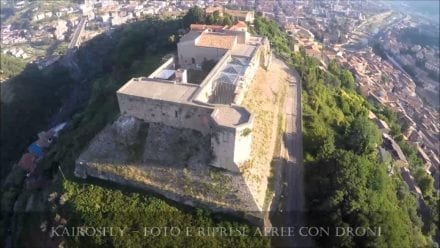
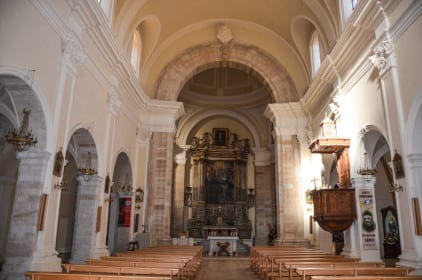
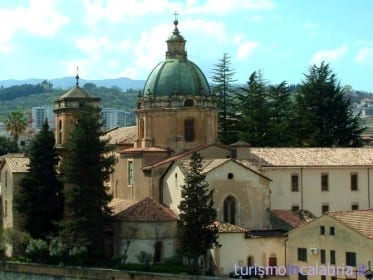
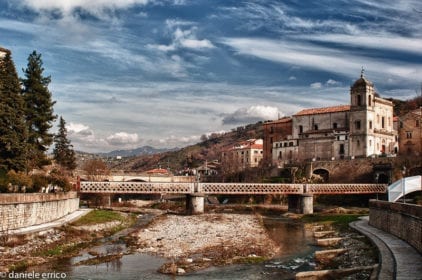
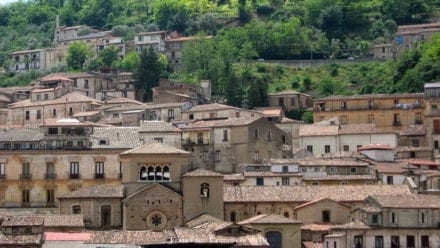
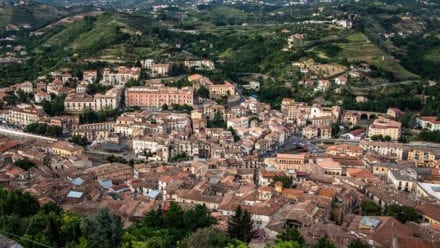
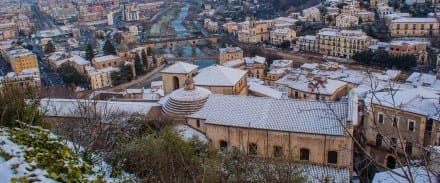
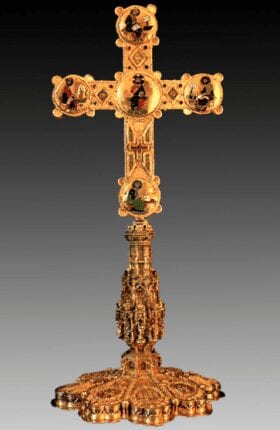
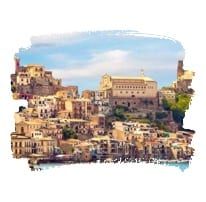
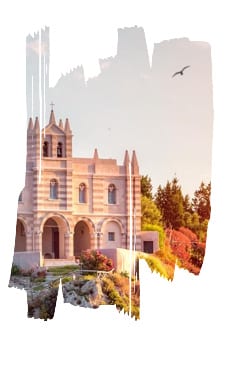 AIRPORTS IN CALÁBRIA
AIRPORTS IN CALÁBRIA
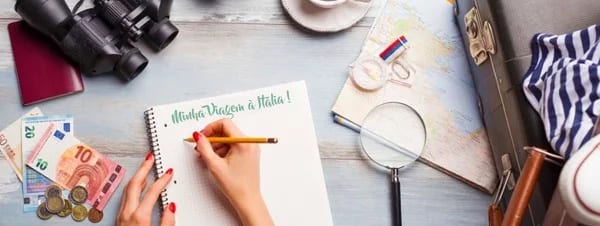
 By hiring my services, you save money and time, and still travel with great peace of mind!
By hiring my services, you save money and time, and still travel with great peace of mind!
Bom dia Ana!
Sou Paulo, também Italo brasileiro, moro aqui na Itália a desde 2004.
Estou trabalhando aqui na Calábria com brasileiros. Gostaria de te conhecer para conhecer melhor teu trabalho e quem sabe desenvolver uma parceria. Se você preferir meun telefone é 3391016767.
Aguardo teu retorno
Das
Oi Paulo, tudo bem? pode me mandar uma msg via instagram:) viajandoparaitalia .. grande abraço, Ana
I was born there and I agree it’s so wonderful in more ways thank one can imagine!
Thank you for showing us this beauty thru your words and images!
Frank Mazzuca
Family Style
🙂 Thank you for read our post:)